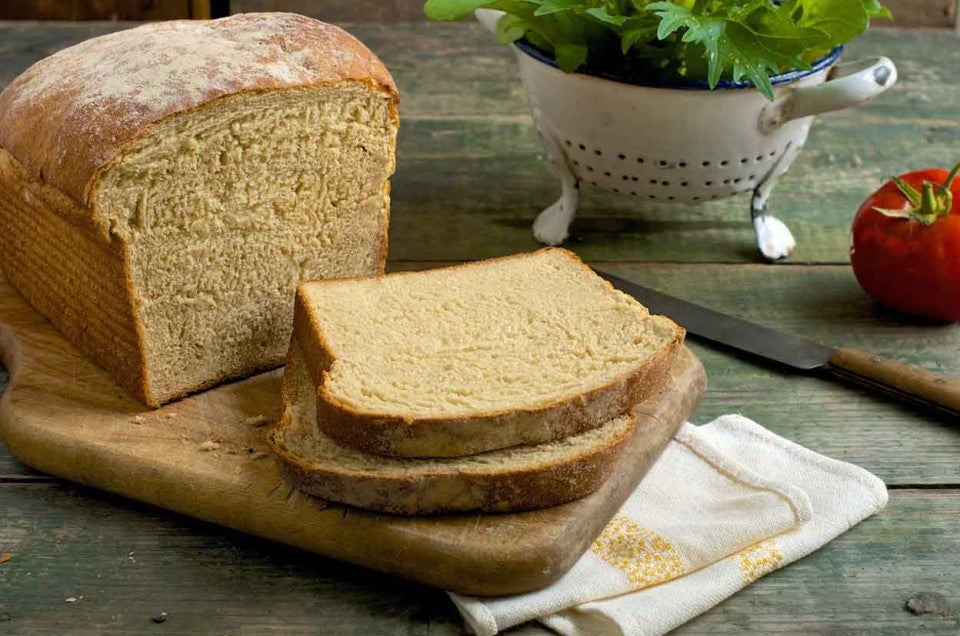100% Whole Wheat Sandwich Bread
Moist, easy to slice, and 100% whole wheat — no, these are NOT contradictory phrases! This whole-wheat loaf is the ideal everyday bread, perfect for sandwiches, toast, and French toast or grilled cheese sandwiches.

Moist, easy to slice, and 100% whole wheat — no, these are NOT contradictory phrases! This whole-wheat loaf is the ideal everyday bread, perfect for sandwiches, toast, and French toast or grilled cheese sandwiches.


Dissolve the yeast in the lukewarm water with a pinch of sugar. Allow it to rest for 15 minutes, till it becomes puffy. If you're using instant yeast, you can skip this step.
Weigh your flour; or measure it by gently spooning it into a cup, then sweeping off any excess. Combine the yeast/water with the flour and remaining ingredients, and mix and knead — by hand, mixer, or bread machine — until you've made a cohesive dough. If you're using a stand mixer, knead at low speed for about 7 minutes. Note that 100% whole wheat dough will never become smooth and supple like dough made with all-purpose flour; it'll feel more like clay under your hands, and may appear a bit rough.
Place the dough in a lightly greased bowl, cover the bowl, and allow it to rise till it's expanded and looks somewhat puffy, about 60 to 90 minutes. Note that dough kneaded in a bread machine will rise faster and higher than bread kneaded in a mixer, which in turn will rise faster and higher than one kneaded by hand. So if you're kneading by hand, you may want to let the dough rise longer than 90 minutes.
Lightly grease a 9" x 5" loaf pan. Gently shape the dough into a smooth log, and settle it into the pan, smooth side up.
Tent the pan with lightly greased plastic wrap, and allow the loaf to rise till it's crowned over the rim of the pan by about 3/4", about 75 minutes. Don't let it rise too high; it'll continue to rise as it bakes. Towards the end of the rising time, preheat the oven to 350°F.
Bake the bread for 10 minutes. Lightly tent it with aluminum foil, and bake for an additional 30 to 35 minutes, or until the center registers 190°F on an instant-read thermometer. Remove it from the oven, and turn it out of the pan onto a rack.
Run a stick of butter over the top of the hot loaf, if desired, for a softer crust. Allow the bread to cool completely before slicing.


